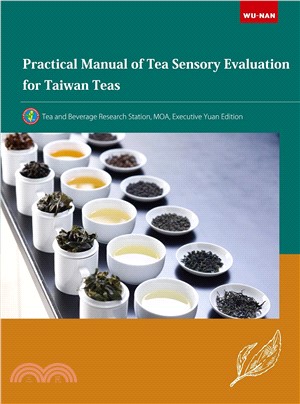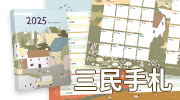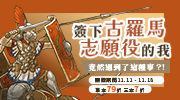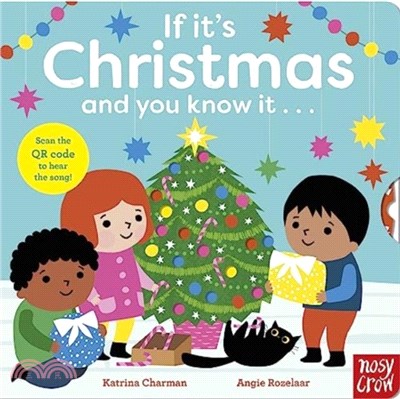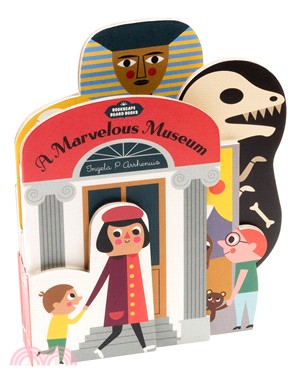Practical Manual of Tea Sensory Evaluation for Taiwan Teas
商品資訊
ISBN13:9786263935556
出版社:五南圖書出版
作者:Tea and Beverage Research Station (TBRS)
出版日:2024/07/10
裝訂/頁數:平裝/152頁
規格:26cm*19cm*0.9cm (高/寬/厚)
重量:410克
版次:1
商品簡介
作者簡介
序
目次
書摘/試閱
相關商品
商品簡介
Tea drinking has a history of five thousand years in the East. The quality of tea is generally graded through sensory evaluation. That is, professionally trained tasters rely on sight, smell, and taste to judge the quality of tea. Generally speaking, as long as you go through a series of rigorous training courses and cultivation, maintain good physical fitness and sensory sensitivity at all times, and be in a stable environment, you can drink the quality of tea. Tea sensory evaluation has long been an important method for evaluating the quality and grading of tea, and is widely recognized by the tea industry.
作者簡介
Tea and Beverage Research Station (TBRS)
The station, formerly named Tea Manufacture Experiment Station under the Production Bureau of the Formosa Governor-General’s Office, was established in 1903. In order to develop and promote Taiwan tea, it was reorganized in 1968 as Taiwan Tea Experiment Station and to which were added Wenshan, Yuchih, Taitun and Tongding branches. Meanwhile, it was reorganized in 1999 as Tea Research and Extension Station, Council of Agriculture, Executive Yuan. The organizational tasks include cultivating excellent tea cultivars, researching and improving tea garden cultivation and management technology, tea tree pests and diseases & their control technology, tea manufacturing technology, tea diversified products, tea garden machinery and tea manufacturing machinery, etc. It is the only professional tea industry guidance organization in Taiwan. Following the upgrade of the Ministry of Agriculture (MOA) on August 1, 2023, it was restructured into the "Tea and Beverage Research Station of the MOA", which consists of four branch stations: northern, central, southern and eastern branch stations. It was inaugurated on August 8. Inheriting the past and setting up the future, it will continue to operate sustainably, expand the scope of research and development and move towards the next generation of healthy drinks as the development direction, and continue to provide healthy and high-quality drinks to the people and the world.
The station, formerly named Tea Manufacture Experiment Station under the Production Bureau of the Formosa Governor-General’s Office, was established in 1903. In order to develop and promote Taiwan tea, it was reorganized in 1968 as Taiwan Tea Experiment Station and to which were added Wenshan, Yuchih, Taitun and Tongding branches. Meanwhile, it was reorganized in 1999 as Tea Research and Extension Station, Council of Agriculture, Executive Yuan. The organizational tasks include cultivating excellent tea cultivars, researching and improving tea garden cultivation and management technology, tea tree pests and diseases & their control technology, tea manufacturing technology, tea diversified products, tea garden machinery and tea manufacturing machinery, etc. It is the only professional tea industry guidance organization in Taiwan. Following the upgrade of the Ministry of Agriculture (MOA) on August 1, 2023, it was restructured into the "Tea and Beverage Research Station of the MOA", which consists of four branch stations: northern, central, southern and eastern branch stations. It was inaugurated on August 8. Inheriting the past and setting up the future, it will continue to operate sustainably, expand the scope of research and development and move towards the next generation of healthy drinks as the development direction, and continue to provide healthy and high-quality drinks to the people and the world.
序
Taiwan National Competition of famous tea is a great event in the tea industry, which not only improves the tea manufacturing technology through mutual observation and exchange, but also has the significance of promoting the price of tea and the economic development of tea villages. However, in the process of evaluation based on human sensory perception, external environmental conditions and internal tasters' physical and mental states will all affect the outcome. Therefore, it is worth considering how to reduce these impacts in order to achieve justice, fairness and transparency. After much investigation, the Tea and Beverage Research Station of the Ministry of Agriculture of the Executive Yuan published the "Tea Industry Technology Extension Manual - Tea Manufacturing Technology" in 2002. Other than the brief introduction of the sensory evaluation of tea in this manual's chapter titled "Tea Quality Examination", there are no other known published books that this research team has been able to uncover on this topic.
This book summarizes many years of practical experience and relevant training courses of tea sensory evaluation personnel of the Tea and Beverage Research Station, and updates relevant materials and pictures of tea sensory evaluation. The content includes personal qualities of a tea taster, sensory evaluation principles, relevant chemical components of tea sensory evaluation, processes, required equipment, common glossaries and practical operation processes, etc. The content is simple, worthwhile to people who are interested in tea drinking and tea lovers alike, to use as a blueprint. Combined with their own experience over time, they will all be able to appreciate the essence and art of the sensory evaluation of tea.
For the timeliness of events such as competitions, contests or appraisals, or the difference of quality and price when purchased, useful information can be obtained in this book. Through the introduction of the tea flavor wheels specially produced in Taiwan, one can enjoy a more enhanced and nuanced aroma and taste experience when appreciating specialty tea from the taster’s own perspective.
This book is characterized by scientific theory, knowledge and practicality. It is suitable for reference and application by tasters, quality control or research and development personnel, tea farmers and tea industry personnel. It encourages people to continuously improve their sensory evaluation skills through continuous practice, so that they can easily evaluate a good cup of tea or taste and grade more than 100 or 1,000 tea samples.
Tea and Beverage Research Station,
MOA, Executive Yuan
Chief
Tsung-Chen Su, PhD
August 2024
This book summarizes many years of practical experience and relevant training courses of tea sensory evaluation personnel of the Tea and Beverage Research Station, and updates relevant materials and pictures of tea sensory evaluation. The content includes personal qualities of a tea taster, sensory evaluation principles, relevant chemical components of tea sensory evaluation, processes, required equipment, common glossaries and practical operation processes, etc. The content is simple, worthwhile to people who are interested in tea drinking and tea lovers alike, to use as a blueprint. Combined with their own experience over time, they will all be able to appreciate the essence and art of the sensory evaluation of tea.
For the timeliness of events such as competitions, contests or appraisals, or the difference of quality and price when purchased, useful information can be obtained in this book. Through the introduction of the tea flavor wheels specially produced in Taiwan, one can enjoy a more enhanced and nuanced aroma and taste experience when appreciating specialty tea from the taster’s own perspective.
This book is characterized by scientific theory, knowledge and practicality. It is suitable for reference and application by tasters, quality control or research and development personnel, tea farmers and tea industry personnel. It encourages people to continuously improve their sensory evaluation skills through continuous practice, so that they can easily evaluate a good cup of tea or taste and grade more than 100 or 1,000 tea samples.
Tea and Beverage Research Station,
MOA, Executive Yuan
Chief
Tsung-Chen Su, PhD
August 2024
目次
01 Introduction
02 Literacy, professionalism and ethics of a taster
03 Principles of sensory evaluation
04 Related chemical compositions of the sensory evaluation of tea
05 Tea sensory evaluation process and required equipment
06 Tea sensory evaluation commonly used glossaries and tea characteristics introduction
07 Tea sensory evaluation and classi¬cation practice operation flow
08 Flavor wheels of Taiwan specialty tea
09 Taiwan-tea Assortment and Grading system (TAGs)
02 Literacy, professionalism and ethics of a taster
03 Principles of sensory evaluation
04 Related chemical compositions of the sensory evaluation of tea
05 Tea sensory evaluation process and required equipment
06 Tea sensory evaluation commonly used glossaries and tea characteristics introduction
07 Tea sensory evaluation and classi¬cation practice operation flow
08 Flavor wheels of Taiwan specialty tea
09 Taiwan-tea Assortment and Grading system (TAGs)
書摘/試閱
01 Introduction
Text, pictures/ Tsung-Chen Su, Chui-Feng Chiu, Sang-Shun Wu
1. Evolution
How does one taste and grade different types of tea? How is it possible to scientifically evaluate a good cup of tea using the senses? Historically, we can see that during the Song Dynasty the "tea competition" was popular among commoners. That tradition continues today in a more formal tea tasting competition using trained assessors. This process evaluates items such as tea shape, color, aroma and taste, which are all significant in the sensory evaluation of tea. As for national standards, Juan (2002) noted that in the early years of the Republic of China (1915), the export of tea from Wenzhou, Zhejiang was inspected, and again 1945, these export inspections from Shanghai, Hankou, Taiwan and other places resumed successively. In 1958, the National Tea Inspection Law (CNS 1009) was created, promulgated and then revised for four times, with the most recent revision in 1986. In addition, the Chinese National Standards of teas (CNS 179) was published and revised 20 times from 1947 to 2011 (Table 1-1). The draft national standard was launched in 2021 for the following reasons:
(1) The Taiwan Tea Research and Extension Station of the Council of Agriculture of Executive Yuan (hereby referred to as the Tea Research and Extension Station, TRES) re-classifies the tea types of Taiwan specialty tea according to the tea manufacturing process. In order to help promote the well-known Taiwan specialty tea to the international market, it plans to standardize Taiwan specialty tea. To enhance the visibility of Taiwan's specialty teas, a number of well-known tea categories in Taiwan have been added under "Partially Fermented Tea", such as "Strip-shaped Paochong Tea", "Ball-shaped Oolong Tea" and "Oriental Beauty Tea".
(2) In order to resolve the disputes arising from the import of tea under the name of Pu 'er tea in recent years, it is proposed to add "Post-fermented tea (Pu 'er tea or dark green tea)" and add a subdivision to reduce the disputes related to the identification of product names.
What is good tea? As long as it suits one's taste, it can be considered a good tea. Preferences for tea vary widely and can be influenced by many factors among them the environmental conditions, local food culture and the human senses, so the perception of tea will be unique to each individual.
Tea drinking in the East has a history of 5,000 years, and it is generally graded using sensory evaluation, that is, by professionally trained tasters who rely on vision, olfaction and gustation to judge the quality of tea. Generally speaking, through a series of rigorous training courses and repetition, when one can maintain good physical and sensory sensitivity, in a stable environment, anyone can become proficient in determining the quality of tea. Tea sensory evaluation has long been an important method for evaluating tea quality and grading, and is also
widely recognized by the tea industry. Taiwan's tea market aims to efficiently and systematically produce teas which conform to the characteristics most preferred by the great general public. Using sensory evaluation for tea quality classification is a practical evaluation method and is also well-established on the international stage to grade the quality of products like coffee or wine.
2. The use of sensory evaluation
The color and flavor of food or processed food is composed of a variety of complex components. It is not possible to determine or evaluate its advantages and disadvantages or completely describe the quality of the product by characterizing a single chemical component. Similarly, since tea is a processed food, its chemical composition is complex. At this time, there is no instrument used to judge the quality of tea more sensitive than the human nose and tongue. Of importance to these quality ratings are the appearance of leaf shape, color, liquor color, aroma,
taste, and the harmony and balance among different flavors. When grading teas for market, it is very important and practical to be able to evaluate the quality of tea quickly and comprehensively. Based on the research of the Tea and Beverage Research Station, the advantages are summarized as follows (Liaw and Yang, 1994; Juan, 2002):
(1) The ability to quickly evaluate the leaf shape, color, aroma and taste of the tea.
(2) The ability to identify the abnormalities in the tea.
(3) Low cost and minimal equipment needed.
The use of human senses to evaluate the quality of tea is a rapid, comprehensive and accurate method. If the taster has extensive tea knowledge (including of the tea production environment, climate conditions and tea processing technology) and experience, he/she can be qualified for the work of tea tasting.
The goal is to teach the evaluator to be reproducible and consistent, like a tuned instrument. In light of the fact that human sensory cells are not instruments, there is a limit before fatigue sets in. Therefore, different sensory evaluators or the same sensory evaluator under different physiological and environmental conditions may still have conflicting assessments for the same tea sample. It is necessary to establish a set of clear norms for tea evaluation in order to achieve fairness, impartiality and transparency. Therefore, to train a tea sensory evaluator involves long-term training, commitment and considerable practical accumulated experience in order to obtain reliable evaluation results.
3. The scientific basis of sensory evaluation
Taiwan's specialty tea industry has used sensory evaluation techniques as a basis of classification for many decades. Since 1975, there have been various competitions by tea region within Taiwan that have relied on such professional tasters. More recently, the tea industry (commercial tea, tea factories, tea shops, hand-shake drink tea shops) has also adapted such techniques for research, tea procurement and the training of personnel to control the quality of raw materials and end products. The tasters of the tea competitions must have an accurate understanding of the specialty teas in different regions of Taiwan. The assessment of liquor color of the tea, the aroma and taste of the tea liquor, and the infused tea leaves, among others, should be accurately mastered. When chemical testing equipment is still unable to comprehensively determine the complex aroma and taste profile associated with tea, the use of human perception is the best solution, for the following reasons:
(1) Verifiable (medical and scientific):
Senses, simply put, are the sensory organs of the body which are stimulated by the outside world and return corresponding perceptions. For example, there are millions of olfactory receptors in the human nasal cavity, which can roughly distinguish nearly 10,000 different scents (Oktar, 2003). The taste buds are generally composed of 50 to 150 taste cells, and there are many sensory molecules on the surface of taste cells that can combine with different substances to present different tastes. According to the Tea and Beverage Research Station, ordinary people can quickly and accurately identify different types of tea by sensory analysis. However, the results of chemical composition analysis by stepwise discriminant analysis of 15 kinds of tea could not fully show the differences among green tea, Wenshen Paochong Tea, Oolong tea and Oriental beauty tea (Tsai et al., 2000).
(2) Learnable:
With training, you can train and remember the aroma and taste of tea in the mouth, such as evaluating the aroma through the olfactory area at the upper end of the nasal cavity, sensing the taste using the tongue, and finally visually examining the color of the infused tea leaves and tea bud to determine the age, tenderness and uniformity. Sensory evaluators, in addition to learning academic tea knowledge and mastering technical tests, must have a period of practical experience to obtain the know-how of real world execution. The Tea and Beverage Research Station has been promoting the education and application of tea sensory evaluation since 2016 and has formulated a complete set of training methods. Sensory evaluation personnel are graded in five levels: elementary, intermediate, high-intermediate, advanced and superior. The certificate will be issued (Figure 1-1) for passing the tests. The ability indexes of all levels are as follows: for elementary tasters, their sensory sensitivity and basic knowledge of tea are tested, and they must be able to tell among sour, sweet, bitter and salty tastes and different kinds of tea (from green tea to black tea). For intermediate tasters, they’ll need to have experience in basic tea evaluation work (such as tasting cup group placement, tea weighing, sampling, brewing, recording, etc.) and be able to distinguish different tea items (types and cultivars) in various tea categories. High-intermediate tasters must be able to understand tea shape,
color, presence, impurities, purity, persistence of aroma and aftertaste, taste and quality, the outlay of leaves, uniformity and other characteristics, and then be able to identify the quality of various types of tea and independently conduct the preliminary evaluation of tea quality evaluation. Advanced tasters must be able to independently evaluate tea quality, describe tea plucking methods, tea tree cultivars and tea quality characteristics, and deal with disputes related to quality evaluation. Superior tasters must be able to integrate professional knowledge and technology of tea evaluation, independently complete tea quality evaluation operations, analyze tea quality characteristics and various factors affecting tea quality, including cultivation, manufacturing, season, altitude, tea area, etc., and carry out tea research and development, innovation and problem solving, so as to improve tea quality and production efficiency. In order to train the practical experience of sensory evaluators, those who have obtained medium-high-level or higher are qualified to participate in or serve as tea evaluators for each competition to enhance their experience and practical skills.
(3) Normativity:
In order to achieve consistency, tea samples are brewed in accordance with the international standard ISO 3103-2019 (E) to ensure fairness and openness. In the actual evaluation, the standard comparison method is generally used to grade the quality (Tsai, 2008).
4. Future development
At present, the evaluation of tea quality and the grading and pricing of tea in all countries relies on sensory evaluation, but the results are still greatly affected by personal subjectivity and external environmental factors. In recent years, with the development of modern precision instrumental analysis technology, chemical testing instruments and methods are used to test the content and composition of tea quality components, and then link this information to the physical and chemical detection of the color, aroma and quality of tea. In the future, a smart tea evaluation expert system can be developed. If combined with traditional tea sensory evaluation, it will provide a more efficient, objective and fair method for tea quality control and evaluation.
Text, pictures/ Tsung-Chen Su, Chui-Feng Chiu, Sang-Shun Wu
1. Evolution
How does one taste and grade different types of tea? How is it possible to scientifically evaluate a good cup of tea using the senses? Historically, we can see that during the Song Dynasty the "tea competition" was popular among commoners. That tradition continues today in a more formal tea tasting competition using trained assessors. This process evaluates items such as tea shape, color, aroma and taste, which are all significant in the sensory evaluation of tea. As for national standards, Juan (2002) noted that in the early years of the Republic of China (1915), the export of tea from Wenzhou, Zhejiang was inspected, and again 1945, these export inspections from Shanghai, Hankou, Taiwan and other places resumed successively. In 1958, the National Tea Inspection Law (CNS 1009) was created, promulgated and then revised for four times, with the most recent revision in 1986. In addition, the Chinese National Standards of teas (CNS 179) was published and revised 20 times from 1947 to 2011 (Table 1-1). The draft national standard was launched in 2021 for the following reasons:
(1) The Taiwan Tea Research and Extension Station of the Council of Agriculture of Executive Yuan (hereby referred to as the Tea Research and Extension Station, TRES) re-classifies the tea types of Taiwan specialty tea according to the tea manufacturing process. In order to help promote the well-known Taiwan specialty tea to the international market, it plans to standardize Taiwan specialty tea. To enhance the visibility of Taiwan's specialty teas, a number of well-known tea categories in Taiwan have been added under "Partially Fermented Tea", such as "Strip-shaped Paochong Tea", "Ball-shaped Oolong Tea" and "Oriental Beauty Tea".
(2) In order to resolve the disputes arising from the import of tea under the name of Pu 'er tea in recent years, it is proposed to add "Post-fermented tea (Pu 'er tea or dark green tea)" and add a subdivision to reduce the disputes related to the identification of product names.
What is good tea? As long as it suits one's taste, it can be considered a good tea. Preferences for tea vary widely and can be influenced by many factors among them the environmental conditions, local food culture and the human senses, so the perception of tea will be unique to each individual.
Tea drinking in the East has a history of 5,000 years, and it is generally graded using sensory evaluation, that is, by professionally trained tasters who rely on vision, olfaction and gustation to judge the quality of tea. Generally speaking, through a series of rigorous training courses and repetition, when one can maintain good physical and sensory sensitivity, in a stable environment, anyone can become proficient in determining the quality of tea. Tea sensory evaluation has long been an important method for evaluating tea quality and grading, and is also
widely recognized by the tea industry. Taiwan's tea market aims to efficiently and systematically produce teas which conform to the characteristics most preferred by the great general public. Using sensory evaluation for tea quality classification is a practical evaluation method and is also well-established on the international stage to grade the quality of products like coffee or wine.
2. The use of sensory evaluation
The color and flavor of food or processed food is composed of a variety of complex components. It is not possible to determine or evaluate its advantages and disadvantages or completely describe the quality of the product by characterizing a single chemical component. Similarly, since tea is a processed food, its chemical composition is complex. At this time, there is no instrument used to judge the quality of tea more sensitive than the human nose and tongue. Of importance to these quality ratings are the appearance of leaf shape, color, liquor color, aroma,
taste, and the harmony and balance among different flavors. When grading teas for market, it is very important and practical to be able to evaluate the quality of tea quickly and comprehensively. Based on the research of the Tea and Beverage Research Station, the advantages are summarized as follows (Liaw and Yang, 1994; Juan, 2002):
(1) The ability to quickly evaluate the leaf shape, color, aroma and taste of the tea.
(2) The ability to identify the abnormalities in the tea.
(3) Low cost and minimal equipment needed.
The use of human senses to evaluate the quality of tea is a rapid, comprehensive and accurate method. If the taster has extensive tea knowledge (including of the tea production environment, climate conditions and tea processing technology) and experience, he/she can be qualified for the work of tea tasting.
The goal is to teach the evaluator to be reproducible and consistent, like a tuned instrument. In light of the fact that human sensory cells are not instruments, there is a limit before fatigue sets in. Therefore, different sensory evaluators or the same sensory evaluator under different physiological and environmental conditions may still have conflicting assessments for the same tea sample. It is necessary to establish a set of clear norms for tea evaluation in order to achieve fairness, impartiality and transparency. Therefore, to train a tea sensory evaluator involves long-term training, commitment and considerable practical accumulated experience in order to obtain reliable evaluation results.
3. The scientific basis of sensory evaluation
Taiwan's specialty tea industry has used sensory evaluation techniques as a basis of classification for many decades. Since 1975, there have been various competitions by tea region within Taiwan that have relied on such professional tasters. More recently, the tea industry (commercial tea, tea factories, tea shops, hand-shake drink tea shops) has also adapted such techniques for research, tea procurement and the training of personnel to control the quality of raw materials and end products. The tasters of the tea competitions must have an accurate understanding of the specialty teas in different regions of Taiwan. The assessment of liquor color of the tea, the aroma and taste of the tea liquor, and the infused tea leaves, among others, should be accurately mastered. When chemical testing equipment is still unable to comprehensively determine the complex aroma and taste profile associated with tea, the use of human perception is the best solution, for the following reasons:
(1) Verifiable (medical and scientific):
Senses, simply put, are the sensory organs of the body which are stimulated by the outside world and return corresponding perceptions. For example, there are millions of olfactory receptors in the human nasal cavity, which can roughly distinguish nearly 10,000 different scents (Oktar, 2003). The taste buds are generally composed of 50 to 150 taste cells, and there are many sensory molecules on the surface of taste cells that can combine with different substances to present different tastes. According to the Tea and Beverage Research Station, ordinary people can quickly and accurately identify different types of tea by sensory analysis. However, the results of chemical composition analysis by stepwise discriminant analysis of 15 kinds of tea could not fully show the differences among green tea, Wenshen Paochong Tea, Oolong tea and Oriental beauty tea (Tsai et al., 2000).
(2) Learnable:
With training, you can train and remember the aroma and taste of tea in the mouth, such as evaluating the aroma through the olfactory area at the upper end of the nasal cavity, sensing the taste using the tongue, and finally visually examining the color of the infused tea leaves and tea bud to determine the age, tenderness and uniformity. Sensory evaluators, in addition to learning academic tea knowledge and mastering technical tests, must have a period of practical experience to obtain the know-how of real world execution. The Tea and Beverage Research Station has been promoting the education and application of tea sensory evaluation since 2016 and has formulated a complete set of training methods. Sensory evaluation personnel are graded in five levels: elementary, intermediate, high-intermediate, advanced and superior. The certificate will be issued (Figure 1-1) for passing the tests. The ability indexes of all levels are as follows: for elementary tasters, their sensory sensitivity and basic knowledge of tea are tested, and they must be able to tell among sour, sweet, bitter and salty tastes and different kinds of tea (from green tea to black tea). For intermediate tasters, they’ll need to have experience in basic tea evaluation work (such as tasting cup group placement, tea weighing, sampling, brewing, recording, etc.) and be able to distinguish different tea items (types and cultivars) in various tea categories. High-intermediate tasters must be able to understand tea shape,
color, presence, impurities, purity, persistence of aroma and aftertaste, taste and quality, the outlay of leaves, uniformity and other characteristics, and then be able to identify the quality of various types of tea and independently conduct the preliminary evaluation of tea quality evaluation. Advanced tasters must be able to independently evaluate tea quality, describe tea plucking methods, tea tree cultivars and tea quality characteristics, and deal with disputes related to quality evaluation. Superior tasters must be able to integrate professional knowledge and technology of tea evaluation, independently complete tea quality evaluation operations, analyze tea quality characteristics and various factors affecting tea quality, including cultivation, manufacturing, season, altitude, tea area, etc., and carry out tea research and development, innovation and problem solving, so as to improve tea quality and production efficiency. In order to train the practical experience of sensory evaluators, those who have obtained medium-high-level or higher are qualified to participate in or serve as tea evaluators for each competition to enhance their experience and practical skills.
(3) Normativity:
In order to achieve consistency, tea samples are brewed in accordance with the international standard ISO 3103-2019 (E) to ensure fairness and openness. In the actual evaluation, the standard comparison method is generally used to grade the quality (Tsai, 2008).
4. Future development
At present, the evaluation of tea quality and the grading and pricing of tea in all countries relies on sensory evaluation, but the results are still greatly affected by personal subjectivity and external environmental factors. In recent years, with the development of modern precision instrumental analysis technology, chemical testing instruments and methods are used to test the content and composition of tea quality components, and then link this information to the physical and chemical detection of the color, aroma and quality of tea. In the future, a smart tea evaluation expert system can be developed. If combined with traditional tea sensory evaluation, it will provide a more efficient, objective and fair method for tea quality control and evaluation.
主題書展
更多
主題書展
更多書展今日66折
您曾經瀏覽過的商品
購物須知
為了保護您的權益,「三民網路書店」提供會員七日商品鑑賞期(收到商品為起始日)。
若要辦理退貨,請在商品鑑賞期內寄回,且商品必須是全新狀態與完整包裝(商品、附件、發票、隨貨贈品等)否則恕不接受退貨。



